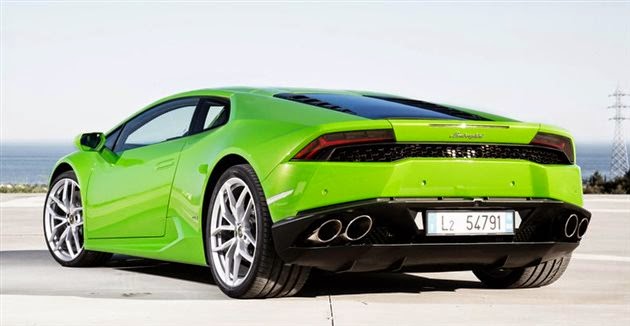Lamborghini Gallardo has been the Italian automaker’s most successful car to date with a total production of 14,002 units in its 10-year life span. When it announced that the Gallardo was being retired, many said that the successor had big shoes to fill and would probably have to just as crazy as the Gallardo was when it was launched. It seems that after all the hype Lamborghini has not disappointed when it launched the Huracan LP 610-4 in April of this year. It is now bringing the car to India and will launch it on September 22. Exterior
The Huracan has the signature low down Lambo design and has a very similar overall shape as compared to the larger Aventador coupe. It gets a low sweeping bonnet, with angular-shaped projector headlights which look like slits in what is otherwise a very smooth façade. The air intakes extend from the front of the car and are superimposed by the number plate holder. On the side, the roofline stretches downwards in both directions accentuating the image of the car sitting really low off the ground. There are a large amount of aerodynamic lines and thanks to the flared wheel arches as well as the large 18-inch wheels, the Huracan looks as planted as possible. The Huracan gets a smooth rear end which looks like an evolution of the Gallardo but thanks to the shape of the tail lamps looks more modern. There are four massive oval exhausts and twig shaped LED tail lamps and a massive lip spoiler which has been placed above a mesh cooling duct for the mid-mounted engine. Interior
The Huracan gets an interior very similar to that of the much larger Aventador but the layout looks a little more organised thanks to the wider size of the instrument cluster. There is a large array of toggle switches on both sides of the steering wheel while the paddles behind the wheel are massive giving the impression of an extremely busy area. If we observe the design, then we can see that the car is all about being driver oriented.he seats are racing buckets with contrast-coloured stitching and are mostly Alcantara while the rest of the dashboard is covered in leather. It gets all the luxury options including a touch screen infotainment system, climate control, electrically adjustable OVRMs, multiple airbags and to add to the drama, a launch control button with a flip up cover.
Engine and gearbox
The Huracan is powered by a 5.2-litre V10 that produces 610bhp, 560Nm of torque and sends power to all four-wheels via a four-wheel-drive system and seven-speed dual clutch gearbox. The car can sprint to 100 kmph from standstill in 3.2 seconds and the 0 to 200kmph run can be done in 9.9 seconds with a claimed top-speed of 325kmph. The Huracan features stop-start technology as standard and has CO2 emissions as low as 290 g/km.





